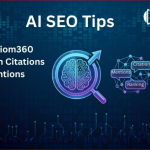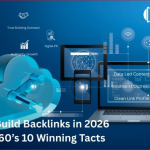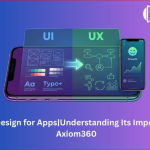In today’s competitive digital landscape, relying on just SEO or only PPC isn’t enough. The real power lies in knowing how to combine SEO and PPC to increase reach, reduce costs, and drive sustainable growth. This synergy not only increases your reach but also helps balance marketing costs and improve ROI.
In this guide, you will discover what SEO and PPC are, the key differences between search engine optimization and pay-per-click management, and actionable tips to create a unified SEO and PPC strategy that maximizes online visibility and keeps you ahead of competitors.
What Are SEO and PPC?

Before using both digital practices, let’s quickly define them to see why they work better together:
- SEO (Search Engine Optimization): It focuses on getting free, organic traffic from search engines to optimize website content, keywords, and technical aspects.
- PPC (Pay‑Per‑Click): Paid ads (like Google Ads or Facebook Ads) that drive immediate traffic by paying each time someone clicks.
SEO and PPC marketing work together to establish long-term authority through SEO while achieving immediate reach through PPC.
Differences Between SEO and PPC in Digital Marketing
The differences between SEO and PPC help you to create more efficient campaigns for your business:
| Aspect | Search Engine Optimization | Pay-Per-Click Management |
| Cost | No cost per click, but requires time & effort | Costs money for each click |
| Speed | It takes months to see results | Instant traffic once ads go live |
| Longevity | Long‑lasting results | Ends when you stop paying |
| Targeting | Broader targeting over time | Highly specific targeting (demographics, time, device) |
| Trust | Higher trust for organic listings | Perceived as ads, may get fewer clicks |
Why Combine SEO and PPC Matters in Digital Marketing?
When you integrate both channels into SEO and PPC strategy, it delivers bigger benefits:
- Double visibility: Appears in both paid and organic listings for the same keywords.
- More data: Use PPC data to discover high‑converting keywords and add them to SEO pages.
- Cost efficiency: Reduce PPC costs by targeting keywords where SEO already ranks well.
- All‑funnel coverage: SEO builds awareness; PPC captures users ready to convert.
- Stronger brand image: Dominating search results to increase brand credibility.
This SEO and PPC(pay-per-click) strategy leads to increased traffic, improved ROI, and faster results.
How to Use SEO and PPC Together Effectively
Here is a practical step‑by‑step SEO and pay-per-click management integration plan to maximize results:
Align Keywords & Data
- Use PPC campaigns to test which keywords yield the best conversions.
- Add those keywords to your SEO content writing to improve your organic ranking.
- Use SEO tools (like Ahrefs or SEMrush) to find low‑competition keywords for PPC.
Coordinate Messaging
- Keep consistent and engaging content across SEO meta titles and PPC ads.
- Highlight the same offers, USPs, or seasonal campaigns.
Target Different Funnel Stages
- Use PPC for product launches, special offers, or competitive keywords.
- Focus on SEO for educational, evergreen content to attract top-of-funnel traffic.
Retarget with PPC
- You can use the PPC retargeting ads to bring back users who first discovered you via organic search.
Use Integrated Reporting
- Analyze which keywords or pages drive the best ROI and sales.
- Optimize based on your digital data, not just a random guess.
Different Useful SEO and PPC Tools to Get Better Results

These digital marketing tools work together to build integrated campaigns that maximize online visibility and ROI. Here are some useful tools for SEO & PPC that can help your business achieve good results.
- Google Ads
Run targeted pay-per-click campaigns and experiment with different keyword variations.
It helps identify which terms drive the best-paid traffic to complement your SEO strategy.
- Google Analytics
Monitor conversions and user behavior across organic and paid channels.
This data reveals which pages and campaigns bring the most valuable traffic.
- SEMrush & Ahrefs
Do in-depth keyword research, backlink tracking, and competitor analysis.
Utilize insights to align your SEO vs PPC strategies and target high-value keywords.
- Microsoft Ads & Facebook Ads
Expand your PPC reach beyond Google to tap into different user segments.
Great for diversifying traffic sources and increasing brand visibility across platforms.
Benefits of an Integrated SEO and PPC Campaign
Combining SEO and PPC brings measurable advantages:
- More clicks: Appear twice in search results → more traffic.
- Better insights: Shared data improves targeting and content.
- Balanced budget: PPC covers gaps while SEO builds long‑term value.
- Higher ROI: Traffic from both channels complements each other.
Competitive edge: Outrank competitors by appearing in both organic and paid search results.
Common SEO and PPC Challenges to Be Aware Of
While the combined strategy is robust, be mindful that it has many challenges:
- Budget balancing: Avoid overspending on PPC if organic rankings are strong.
- Overlapping keywords: Manage bidding to avoid competing with your own organic listings.
- Measurement complexity: Integrated campaigns need clear KPIs and a tracking setup.
By monitoring your campaigns, these issues can be minimized through effective planning.
SEO vs PPC vs Combined Approach
Instead of thinking about SEO vs PPC, consider how to combine them to get the best results. Use SEO to build long‑term authority and trust in your brand, while PPC helps to drive immediate traffic and lets you know which keywords convert. When you blend data, targeting, campaigns, you can attract potential customers from the first click to the final conversion.
With the proper SEO and PPC strategy, you can maximize your online visibility, boost conversions, and build a marketing approach that’s both sustainable and resilient.
Ready to take the next step? Partner with the Axiom360 digital marketing agency UK expert digital marketing team to design a custom strategy tailored to your business goals.





